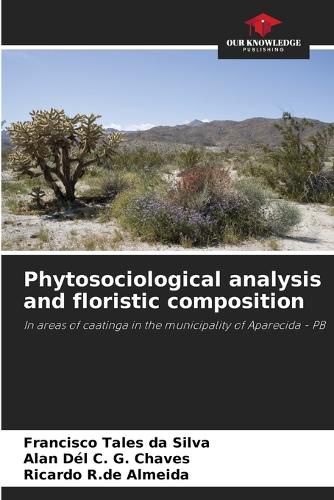Readings Newsletter
Become a Readings Member to make your shopping experience even easier.
Sign in or sign up for free!
You’re not far away from qualifying for FREE standard shipping within Australia
You’ve qualified for FREE standard shipping within Australia
The cart is loading…






The aim of this study was to carry out a phytosociological and floristic survey of the caatinga biome in the municipality of Aparecida - PB. Two areas were chosen, one more impacted by anthropogenic action in the Duas Lagoas site and the other less so in the Acaua settlement, both in the municipality of Aparecida with geographical coordinates "06 degrees40' 44.2" S and "38 degrees01' 13.6" W. The sampling units were plots, with 10 in each of the areas with dimensions of 10x20 m and a distance of 50 m between each plot. All the individuals with a circumference of 10 cm or more were identified and the CAB was measured using measuring rods and PVC pipes, graduated in centimeters and meters. The floristic and phytosociological parameters were: diversity, density, dominance, frequency, value of importance and coverage index. The data analyzed showed the following results: 8 families and 14 species identified, with a predominance of the Fabaceae family and the species Croton sonderiamus Null. Arg. The Shannon-Wiener Index for the areas together was 1.87. The data was processed using the FITOPAC 2.1 program.
$9.00 standard shipping within Australia
FREE standard shipping within Australia for orders over $100.00
Express & International shipping calculated at checkout
The aim of this study was to carry out a phytosociological and floristic survey of the caatinga biome in the municipality of Aparecida - PB. Two areas were chosen, one more impacted by anthropogenic action in the Duas Lagoas site and the other less so in the Acaua settlement, both in the municipality of Aparecida with geographical coordinates "06 degrees40' 44.2" S and "38 degrees01' 13.6" W. The sampling units were plots, with 10 in each of the areas with dimensions of 10x20 m and a distance of 50 m between each plot. All the individuals with a circumference of 10 cm or more were identified and the CAB was measured using measuring rods and PVC pipes, graduated in centimeters and meters. The floristic and phytosociological parameters were: diversity, density, dominance, frequency, value of importance and coverage index. The data analyzed showed the following results: 8 families and 14 species identified, with a predominance of the Fabaceae family and the species Croton sonderiamus Null. Arg. The Shannon-Wiener Index for the areas together was 1.87. The data was processed using the FITOPAC 2.1 program.